Celebrating a Milestone
Tennessee’s 50th Certified Local Government
By Ellen Dement Hurd, CLG Coordinator
Established in 1980 by the National Park Service (NPS), the Certified Local Government (CLG) program promotes preservation through a partnership between NPS, state historic preservation offices (SHPO), and local governments with historic zoning ordinances. The Tennessee Historical Commission’s CLG program was developed by Dr. Jim Jones in 1984, with the first local governments joining the program in 1985. Nancy Jane Baker served as CLG Coordinator from 1989 to 2001, followed by Dr. Tara Mitchell Mielnik, Kevin Chastine, Nathan Montague, and Rob Crawford. Dan Brown held the role from 2011 to 2016, Jane-Coleman Cottone from 2016 to 2021, and Ellen Dement Hurd since June 2021.
Becoming a CLG provides several benefits to local communities. At least 10% of Tennessee’s annual Historic Preservation Fund allocation is set aside for CLG access every year. CLGs are also given the authority to review all Section 106 review projects and all new National Register nominations within their boundaries. In addition, CLGs receive increased technical support and training from THC. A list of CLG grant-funded projects, requirements for CLG status, and CLG contact information is available on the THC website here.

View of the Tennessee State Capitol from Bicentennial Capitol Mall State Park, the urban state park in downtown Nashville opened on June 1, 1996, to commemorate the 200th anniversary of the establishment of Tennessee’s statehood.
Tennessee’s Fifty CLG communities:
Clarksville and Montgomery County were both certified on June 7, 1985. Located in northern central Tennessee, Clarksville is the county seat of Montgomery County. Clarksville was founded in 1785, and Montgomery County was created in 1786. It is the home of Austin Peay State University and the U.S. Army’s Fort Campbell. The Clarksville-Montgomery County Regional Historic Zoning Commission oversees the Emerald Hill, Dog Hill, and Main Street historic zones. In 2019, THC funded a survey of downtown Clarksville’s historic resources.

Detail of the Strawberry Alley Children’s Fountain in downtown Clarksville, one of many public artworks featured on the city’s historic streets. Portions of the 20 foot tall and 15-foot wide fountain featuring 18 bronze statues of children are temporarily removed and cleaned each winter for preservation purposes.
The town of Greeneville became a CLG on June 7, 1985. The East Tennessee town was founded in 1783 and incorporated in 1795 as the seat of Greene County. It briefly served as the capital of the State of Franklin in the eighteenth century and is also known as the home of President Andrew Johnson. The Greeneville Historic Zoning Commission was established in 1964 and oversees a local historic zone that encompasses most of the town. Greeneville received a 2014 grant to restore the windows of the National Register-listed Dixon-Williams Mansion and a 2019 survey grant from THC.
Jackson and Madison County were certified on June 26, 1985. Located in West Tennessee, the city and county were both established in 1821. Nearby, Pinson Mounds State Archaeological Park is a prehistoric Eastern Woodland mound complex. The Jackson-Madison County Historic Zoning Commission oversees locally designated historic districts and conservation districts, including the East Main Historic District, the North Highland Historic District, the Terrace Place Historic District. The Jackson Greyhound Bus Station was rehabilitated using historic tax credits and received a 2021 Certificate of Merit Award from THC.

Photograph of the Jackson Civic Center before it was renamed the Carl Perkins Civic Center in commemoration of the famed rockabilly singer, songwriter, and performer who died and was buried in Jackson in 1998.
Nashville was certified on July 16, 1985. Located in middle Tennessee, Nashville was founded in 1779 as the Davidson County seat, and it has served as the state capital since 1843. Notable historic sites include President Andrew Jackson’s Hermitage plantation, the Civil War Fort Negley, and the Ryman Auditorium (known as the Mother Church of County Music). The city’s Metropolitan Historical Commission was established in 1966 and works to document, save, and increase public awareness of the city’s historic places. The Metropolitan Historic Zoning Commission oversees the city’s Historic Preservation Zoning Overlays, Neighborhood Conservation Zoning Overlays, Historic Bed and Breakfast Overlays, Historic Landmark Overlays, and Historic Landmark Interior Overlays. In 2021, the city began offering a local historic tax incentive. Nashville projects funded by THC include a 2021 survey of rural cemeteries, a 2018 pattern book for outbuildings in historic overlay districts, and a 2015 master plan for Two Rivers Mansion.

The Tennessee War Memorial, also known as the War Memorial Auditorium, is a 2,000-seat performance hall located in Nashville. Receiving architectural awards when it was built in 1925, it was listed on the National Register of Historic Places in 2017.
Knoxville joined the CLG program on August 5, 1985. The city of Knoxville was established in 1786 as the Knox County seat, and it is the largest city in east Tennessee. Knoxville has been home to the University of Tennessee since 1794, and in 1796 it became the first capital of the State of Tennessee. Knoxville’s local historic districts include Edgewood-Park City, Fairmont Park, Fort Sanders, Fourth and Gill, Gobblers Knob, Lyons View Pike, Market Square, Mechanicsville, Old North Knoxville, Scenic Drive, and Tazewell Pike. The city further supports preservation through a local Historic Preservation Fund established in 2014, and it is home to Marble Springs State Historic Site. THC grant projects in Knoxville include a historic resource inventory in 2014, restoration of the Ramsey House in 2016, and funding for staff and commissioners to attend the National Alliance of Preservation Commissions conference in 2017.
The city of Covington became a CLG on August 19, 1985. The west Tennessee city was founded in 1824 as the seat of Tipton County. It is home to the world’s oldest Bar-B-Que Cooking Contest. The city’s Historic Zoning District includes residential and commercial historic resources. In 2010, the Tennessee Historical Commission funded a historic resource survey of Covington and Tipton County.
The largest city in West Tennessee, Memphis joined the CLG program on December 19, 1985. Memphis was founded in 1819 on the Mississippi River as the seat of Shelby County, and it has long served as a regional hub for commerce and transportation. Notable historic sites in Memphis include Elvis Presley’s Graceland, the Peabody Hotel, and the Lorraine Motel where Martin Luther King, Jr. was assassinated. Established in 1975, the Memphis Landmarks Commission oversees sixteen local historic districts: Annesdale Park, Annesdale-Snowden, Central Gardens, Collins Chapel, Cooper Young, Cotton Row, Crosstown, Evergreen, Gayoso-Peabody, Glenview, Lea’s Woods, Maxwellton, Rozelle-Annesdale, South Main, Speedway Terrace, Victorian Village, Vollintine-Evergreen, and Withers Home. THC-funded projects in Memphis include a 2011 architectural and historical survey of the city and a 2014 historic structures report for the National Register-listed Mallory-Neely House.

Beale Street Historic District in Memphis, where visitors follow the U.S. Civil Rights Trail and the Beale Street Brass Note Walk of Fame commemorates the many talented people who brought Memphis music to the world.
Chattanooga was certified on November 28, 1989. Situated on the Tennessee River in southern middle Tennessee, Chattanooga is the site of the Mississippian town Citico and the Cherokee town of Ross’s Landing, from which the Trail of Tears began in 1839. Chattanooga was incorporated later that year as the seat of Hamilton County. The city witnessed several battles during the Civil War. Rock City Gardens opened in Chattanooga in 1932, and the city is the namesake of Glenn Miller’s 1941 “Chattanooga Choo Choo.” The Chattanooga Historic Zoning Commission oversees four Local Historic Districts: Saint Elmo, Fort Wood, Ferger Place, and Battery Place. In 2021, THC staff assisted with an updated survey of Chattanooga’s National Register historic districts.
Kingsport joined the CLG program on January 18, 1990. The east Tennessee city was settled on the Holston River in 1771 and chartered in 1822. Also known as Salt Lick, the site was an important trading center for Cherokee Indians, white settlers, and travelers passing through the nearby Cumberland Gap. A Civil War Battle was fought in Kingsport in 1864. In 1917, city planner John Nolen’s firm created a “garden city” plan for Kingsport, which was subsequently nicknamed the “Model City” and became the headquarters of Eastman Chemical Company. The Kingsport Historic Zoning Commission oversees the locally designated Boatyard, Church Circle, Main Street, White City, Watauga Street, Park Hill, Rotherwood, and Exchange Place Historic Districts. In 2018, Kingsport received a grant from THC to create design guidelines for the city’s historic overlay districts.

Opened in 1909 as Terminal Station, Chattanooga’s train depot welcomed thousands of travelers during the golden age of railroads. Today, the city’s National Register-listed Terminal Station stands as part of the world-famous Chattanooga Choo Choo Hotel.
Franklin was certified on May 25, 1990. Located in Central Tennessee, Franklin was founded in 1799 and is the seat of Williamson County. The city was the site of a major battle during the Civil War, which is remembered at museums Carnton Plantation and the Carter House (a state historic site). The Franklin Historic Zoning Commission oversees the Adams Street, Boyd Mill Avenue, Downtown Franklin, Everbright Avenue, Franklin Road, Hincheyville, and Lewisburg Avenue Local Historic Districts, as well as eight additional local landmarks. THC grant projects in Franklin include ground-penetrating radar investigations of Rest Haven and Franklin City Cemeteries in 2014, expansion of the Carter Hill Battlefield Park in 2018, and window restoration at Harlinsdale Farmhouse in 2020.
Collierville became a CLG on December 4, 1990. Founded in 1836, the west Tennessee town was the site of two Civil War battles in 1863 and emerged as the Cheese Making Capital of West Tennessee in the early twentieth century. The Historic District Commission oversees the town’s historic district, which includes the town square and surrounding commercial and residential properties. In 2020, THC funded a historic resources survey in Collierville.
Martin joined the CLG program on January 28, 1991. Located in northwest Tennessee, Martin was established in 1873 at the intersection of the Nashville and Northwestern Railroad and the Mississippi Central Railroad. The Hall-Moody Institute, a Baptist school, opened in 1900 and became a branch of the University of Tennessee in 1927. Martin’s Historic Zoning Commission was created in 1986 and oversees a historic district that includes the city’s historic commercial downtown. In 2021, Martin received a THC grant to update its design guidelines for the historic district.
Sparta was certified on June 19, 1991. Located in mid-Tennessee, Sparta was established in 1809 as the seat of White County. Sparta was the home of bluegrass artist Lester Flatt and is known as “Bluegrass USA.” The Historic Zoning Commission oversees the city’s downtown commercial historic district. Sparta is home to the Sparta Rock House State Historic Site, and THC funded a design guidelines update for Sparta in 2021.
Gainesboro became a CLG on February 4, 1993. The middle Tennessee town was settled in the 1770s and established in 1817 as the seat of Jackson County. In 1794, Governor William Blount established Fort Blount near present-day Gainesboro. The Gainesboro Historic District Commission oversees a local historic district that includes the courthouse square and surrounding commercial buildings. THC grant projects in Gainesboro include a 2014 restoration grant for the Fox School, a 2015 restoration grant for the E.O. Smith House, and a 2018 restoration grant for the Jackson County Historical Museum.
Jonesborough was certified on September 3, 1996. The oldest town in Tennessee, Jonesborough was established in 1779 as the seat of Washington County in what is now eastern Tennessee. It became the capital of the State of Franklin in 1784, and in 1820 The Emancipator, an abolitionist periodical, began publication in Jonesborough. The Jonesborough Historic District includes much of the town’s historic commercial and residential buildings. The Chester Inn State Historic Site is located in Jonesborough, and the THC funded a survey and nomination update for National Register districts in 2014.
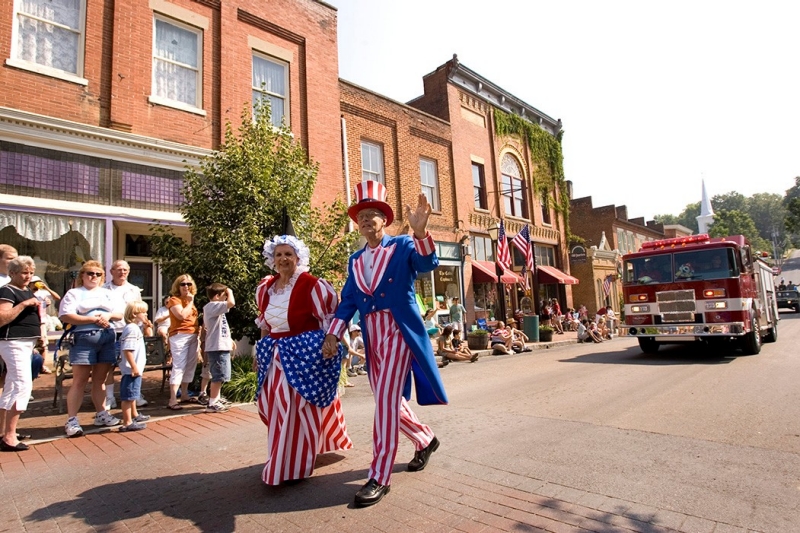
Jonesborough, Tennessee’s oldest town, celebrates Jonesborough Days every July 3rd and 4th with a patriotic parade down Boone and Main Streets.
Harriman joined the CLG program on September 16, 1996. Located in east Tennessee, the town was established in 1889 by Methodist minister Frederick Gates as a temperance town—entirely free from alcohol. The American Temperance University was founded in 1905 in Harriman. The town’s Historic Zoning Commission was established in 1990 and oversees the Cumberland Street, Downtown Commercial, and Margrave Drive Historic Districts. In 2012, THC funded structural repairs and stabilization of Harriman’s Temperance Building.
Gallatin became a CLG on October 16, 1996. The middle Tennessee city was established in 1802 as the seat of Sumner County. Nearby state historic sites include Cragfont, Wynnewood, and Hawthorn Hill. In 1991, Gallatin created their historic zoning program, which includes the East Main Street Historic District and the Woodson Terrace Historic District. THC has funded a survey of the city’s historic districts in 2020.
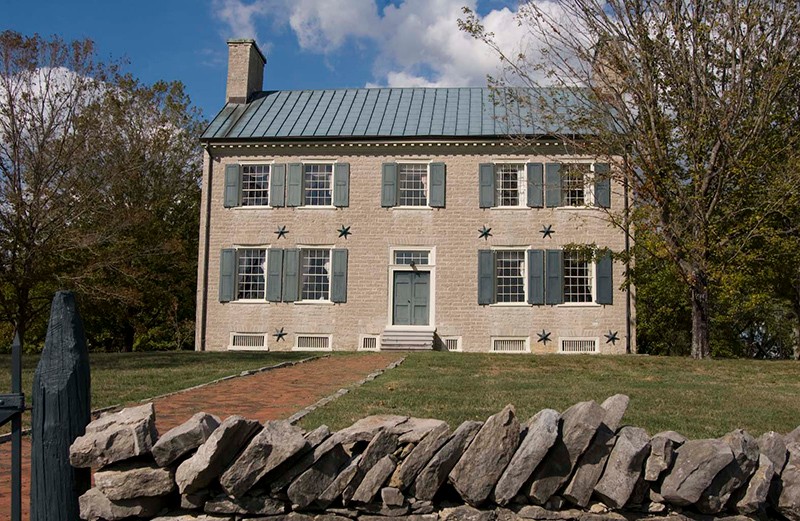
Cragfont State Historic Site, located east of Gallatin, is the preserved and interpreted home of Revolutionary War protagonist and Middle Tennessee pioneer General James Winchester.
Shelbyville was certified on June 18, 1998. The seat of Bedford County in middle Tennessee, Shelbyville was established in 1810. As the home of the Musgrave Pencil Company, Shelbyville is known as “the Pencil City”. Shelbyville is also known as “the Walking Horse Capital of the World” because it has hosted the Tennessee Walking Horse National Celebration since 1939. In 2021, THC funded a restoration grant for the windows of the 1934 Bedford County Courthouse. The city’s Historic Zoning Commission oversees the Downtown Historic District and the Tree Streets, Cox-Adams Landmark, Reeves/Chinouth, and Kitzmiller/Blowers Historic Conservation Districts.
Johnson City joined the CLG program on October 14, 1999. The city was founded in east Tennessee in 1856 by Henry Johnson as a railroad depot, and it was incorporated in 1869. The city is home to the Tipton-Haynes State Historic Site, the Mountain Home VA Medical Center, a National Historic Landmark constructed in 1903, and East Tennessee State University, founded in 1911. A preservation plan for Johnson City was prepared with a 1997 grant from THC, and in 2018 a THC grant funded a survey and National Register nomination for the Gump Addition residential area.
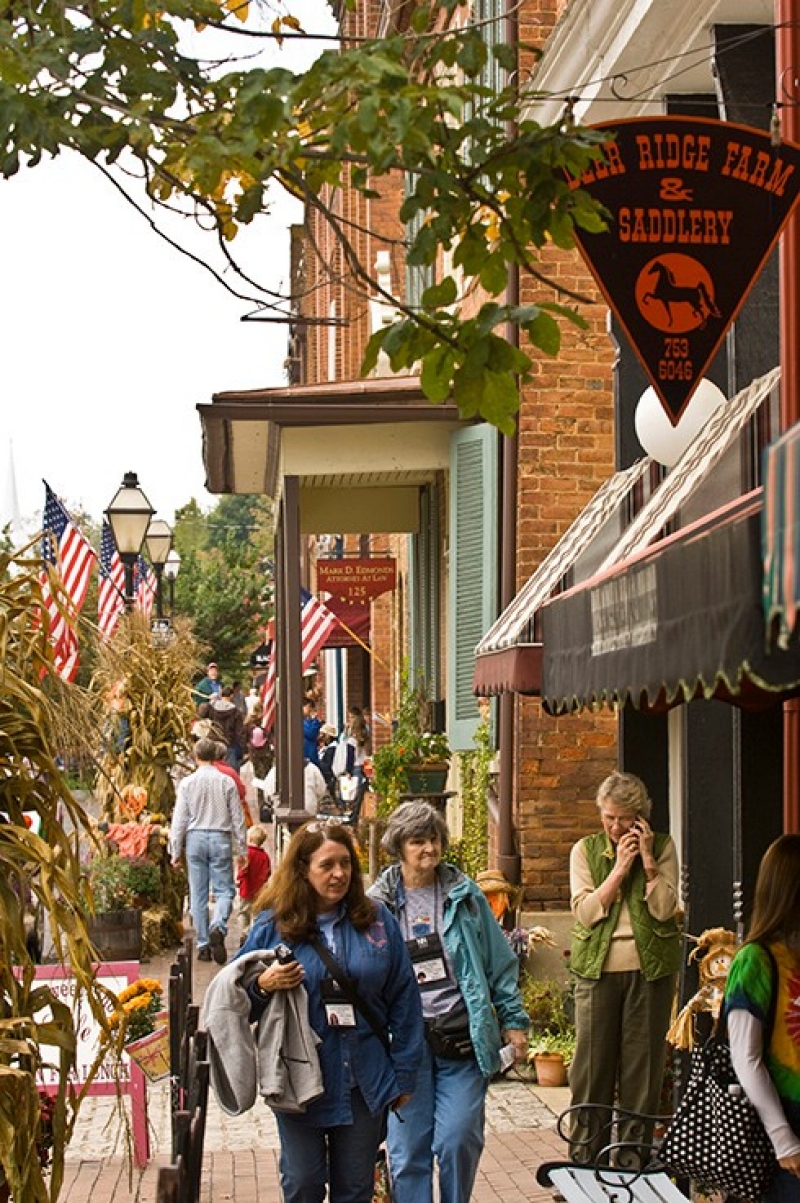
Johnson City, where a revitalized downtown offers shopping, entertainment, and the East TN & Western NC Depot, or Tweetsie Depot, serves as the original home of the Yee-Haw Brewing Company.
Rogersville was certified on March 15, 1999. The east Tennessee town was first settled in 1775 along the Wilderness Road stagecoach route. Rogersville officially founded as the seat of Hawkins County in 1789. It is home to Tennessee’s first newspaper and first post office. The Rogersville Historic Zoning Commission oversees a local historic district that includes commercial and governmental resources, including the 1824 Hale Springs Inn and the 1836 Hawkins County Courthouse. THC funded restorations of the St. Marks Presbyterian Church in 2018 and the Powell Law Office in 2021.
Bolivar became a CLG on August 8, 2000. The seat of Hardeman County in west Tennessee, Bolivar was established in 1825 on the site of the Chickasaw town of Hatchie. The Civil War battles of Hatchie Bridge and Middleburg were fought nearby in 1862. The city features many homes built by architect Fletcher Sloan that have been restored by the Association for the Preservation of Tennessee Antiquities. The Bolivar Historic Zoning Commission oversees the Court Square District, the Bills-McNeal District, and the North Main Street District. THC funded the restoration of the United Sons & Daughters of Charity Lodge Hall in 2020 and the restoration of the Hardeman County Courthouse in 2016.
Columbia joined the CLG program on October 17, 2001. The central Tennessee city was founded in 1808 as the seat of Maury County and incorporated in 1817. Located on the banks of the Duck River, Columbia is home to two National Historic Landmarks, the President James K. Polk Home and Rattle and Snap Plantation, as well the Columbia Athenaeum and the annual Mule Day event. The Historic Zoning Commission oversees the Downtown Commercial, Athenaeum, West 6th, West 7th, and Barrow Court Historic Districts. THC funded a restoration of the Jack and Jill Building in 2016 and the creation of design guidelines and a preservation plan for the city in 2017.
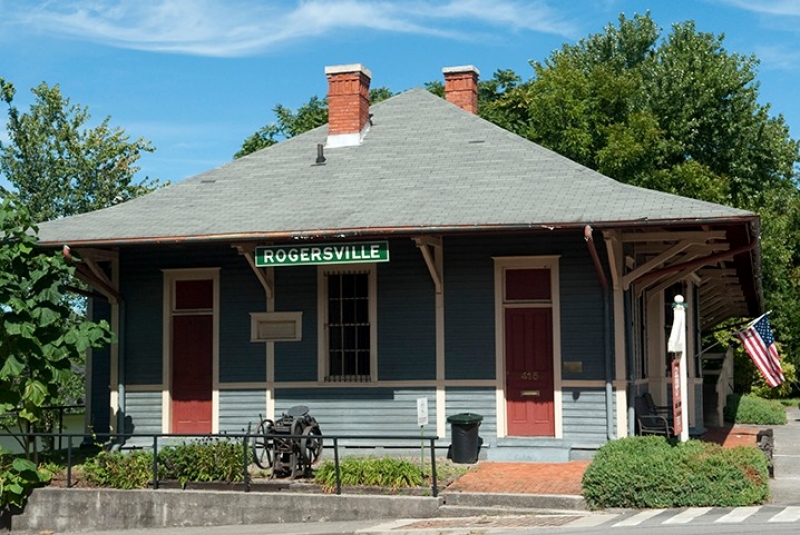
Rogersville’s Southern Railway Train Depot, built in 1890, has served as the Rogersville Heritage Association headquarters and site of the Tennessee Newspaper and Printing Museum since 1987
Cookeville was certified on May 1, 2002. The mid-Tennessee city was established in 1854 as the seat of Putnam County. Cookeville is home to Tennessee Technological University, which was founded in 1909 as Dixie College. The Cookeville Historic Zoning Commission was created in 2000 and oversees the North Dixie Avenue, Cream City, East Broad/Freeze Street, and East 8th Street Historic Districts. In Cookeville, THC has funded the digitization of historic property survey data in 2007 and the creation of a self-guided walking tour of local historic districts in 2014.
Bartlett became a CLG on July 1, 2002. First called Union Depot, the west Tennessee city was first settled in 1829 and incorporated in 1866. Notable historic sites include Cedar Hall, the Nicholas Gotten House, and Davies Manor. Bartlett’s historic zoning program was created in 1999, and the Historic Preservation Commission created an awards program in 2011.
Murfreesboro became Tennessee’s 25th CLG on July 29, 2003. Founded in 1811 as the seat of Rutherford County in middle Tennessee, Murfreesboro served as the capital of Tenness from 1818-1826. During the Civil War, the 1862 Battle of Stones River was fought in Murfreesboro; the site is now a National Battlefield. Middle Tennessee State University was founded in Murfreesboro in 1911. The city’s Historic Zoning Commission oversees the East Main Street Historic Zone, and the city operates the Oaklands Mansion House Museum. THC funded the purchase of a battlefield tract at Stones River in 2020.
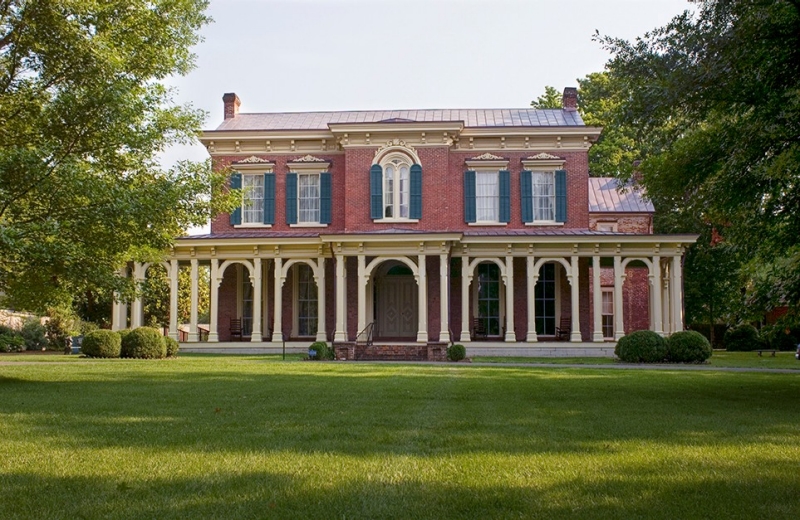
In Murfreesboro, the National Register-listed Oaklands Mansion was saved from demolition by the Oaklands Association and opened for public visitation in the early 1960s.
Dandridge joined the CLG program on November 7, 2003. Founded in 1783, the east Tennessee town is the seat of Jefferson County. The town sits on the French Broad River, and in its early years was a stagecoach stop. Many early nineteenth century inns and taverns remain, including Shepard’s Inn, Roper Tavern, Hickman Tavern, and Thomas Tavern. A Civil War skirmish occurred in Dandridge in 1863, and in 1942, Douglas Dam was constructed on the French Broad River nearby. Dandridge’s local historic district includes the town’s historic core. In 2014 and 2016, THC funded the restoration of the Hickman Tavern, now the Dandridge Town Hall.
McMinnville joined the CLG program on September 22, 2004. The middle Tennessee city was founded in 1809 as the seat of Warren County. Major historic sites include Falcon Rest, the Black House, and the Park Theatre, and McMinnville is the home of musical artists Uncle Dave Macon, Dinah Shore, and Dottie West. McMinnville’s historic zoning program protects its historic commercial district.
Hohenwald became a CLG on December 8, 2004. The mid-Tennessee city was founded in 1878 and is the seat of Lewis County. The city began as a community of German immigrants and later merged with another nearby immigrant town, New Switzerland. THC funded a walking tour of Hohenwald’s Residential Historic District in 2007 and restoration of the Hohenwald Depot in 2014.
Brownsville was certified on January 21, 2009. The west Tennessee seat of Haywood County was established in 1824. The city is home to the West Tennessee Delta Heritage Center and Temple Adas Israel, the oldest synagogue in Tennessee. Brownsville’s historic zoning program protects the Business Square and Residential Historic Districts. THC funded a survey of the city’s historic resources in 2012 and the creation of maps, brochures, and a digital access campaign in 2014.
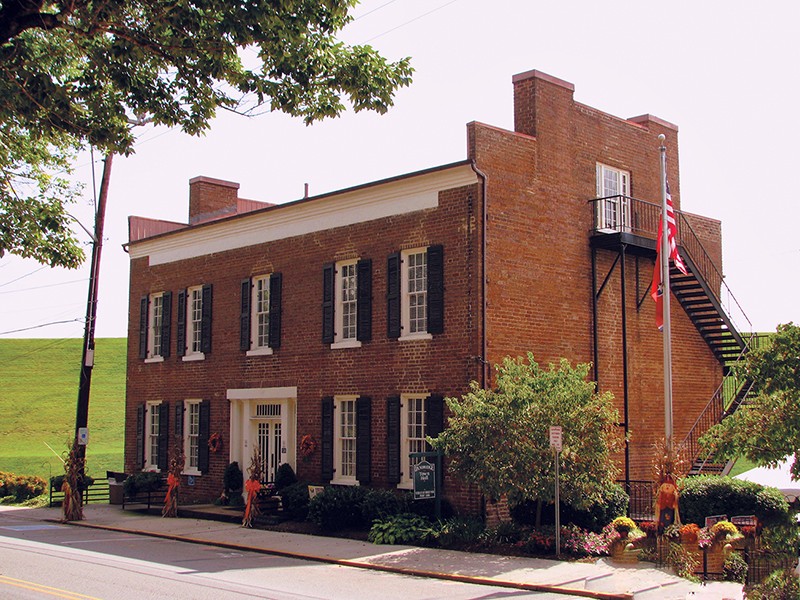
Dandridge, Hickman Tavern, now the Dandridge Town Hall. Photograph by Brent Moore, distributed under a CC-BY 2.0 license.
La Grange joined the CLG program on July 24, 2009. Located in west Tennessee on the Wolf River, La Grange was originally the site of a Chickasaw village. The town was incorporated in 1829. Also known as La Belle Village, La Grange is known for its collection of antebellum Greek Revival houses. Nearby Ames Plantation hosts the National Field Trial Championship for bird dogs every year. THC funded the restoration of the La Grange Civic Center in 2015, and THC surveyed the town’s historic resources in 2021.
McKenzie was certified on December 18, 2012. The west Tennessee was organized in 1867 at the intersection of the Nashville and Northwestern Railroad and the Memphis and Ohio Railroad. It is home to Bethel University, which was founded in 1847 in McLemoresville, Tennessee, and moved to McKenzie in 1872. THC has funded a survey of the city’s historic resources in 2012 and updated design guidelines in 2020.
Sullivan County became a CLG on May 24, 2012. The east Tennessee county was established in 1779. Its seat, Blountville, is the only unincorporated county seat in the state, and the county is also home to Kingsport and Bristol. The county is home to Rocky Mount State Historic Site, the first seat of government of the Southwest Territory in 1890. The county’s Historic Zoning Commission oversees the Blountville Historic District, six Blountville Conservation District, and the Piney Flats Historic District. THC has funded a survey and update of the Blountville Historic District in 2012 and restoration of the Anderson Townhouse in 2019.
Jefferson City joined the CLG program on August 12, 2015. Founded in east Tennessee in 1788 under the name Mossy Creek, the area was incorporated as Jefferson City in 1901. In 1851, Carson-Newman University was founded in Mossy Creek, and a Civil War battle was fought in the area in 1863. The Cherokee Dam on Mossy Creek was constructed in 1942 and powered nearby Oak Ridge. The Historic Mossy Creek District includes the city’s historic commercial downtown. THC funded masonry work at Glenmore Mansion in 2020.
Cleveland was certified on December 14, 2015. The east Tennessee city was part of the Cherokee Nation’s territory. The tribe’s last capital was located nearby at Red Clay, now a state historic park, from 1832 until the tribe’s removal in 1838. Cleveland was established in 1838 as the seat of Bradley County. After the Civil War, Cleveland experienced industrial prosperity with the opening of the Harwick Stove Company and several hosiery mills. Lee University was founded by the Church of Christ in 1918. Since 2004, the Historic Preservation Commission has overseen the Residential Historic District. THC funded the restoration of the Craigmiles House, now the city’s library, in 2016.
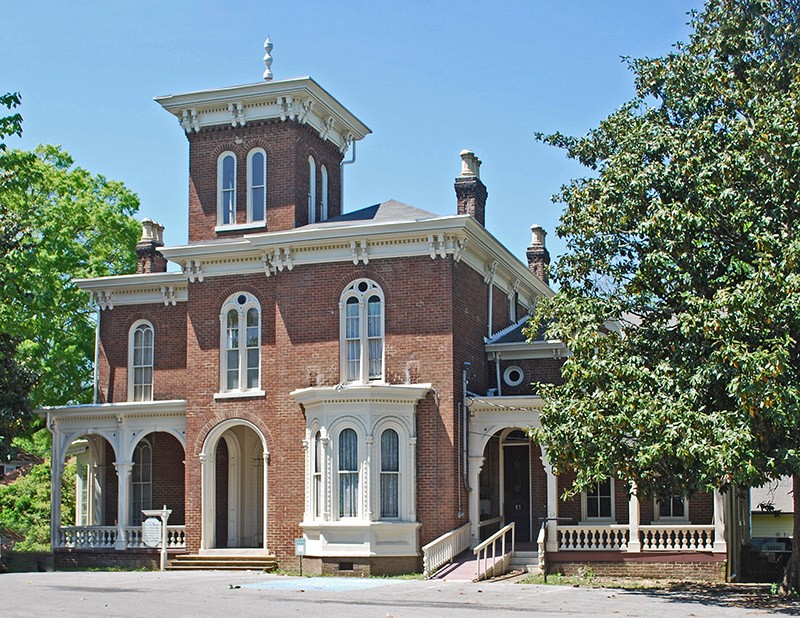
Craigmiles House in Cleveland is the National Register-listed Italian Villa-style home that Pleasant Craigmiles built for his wife in 1866, after she determined that the first house they built in 1863, the two-story Victorian-style house across the street, was too small.
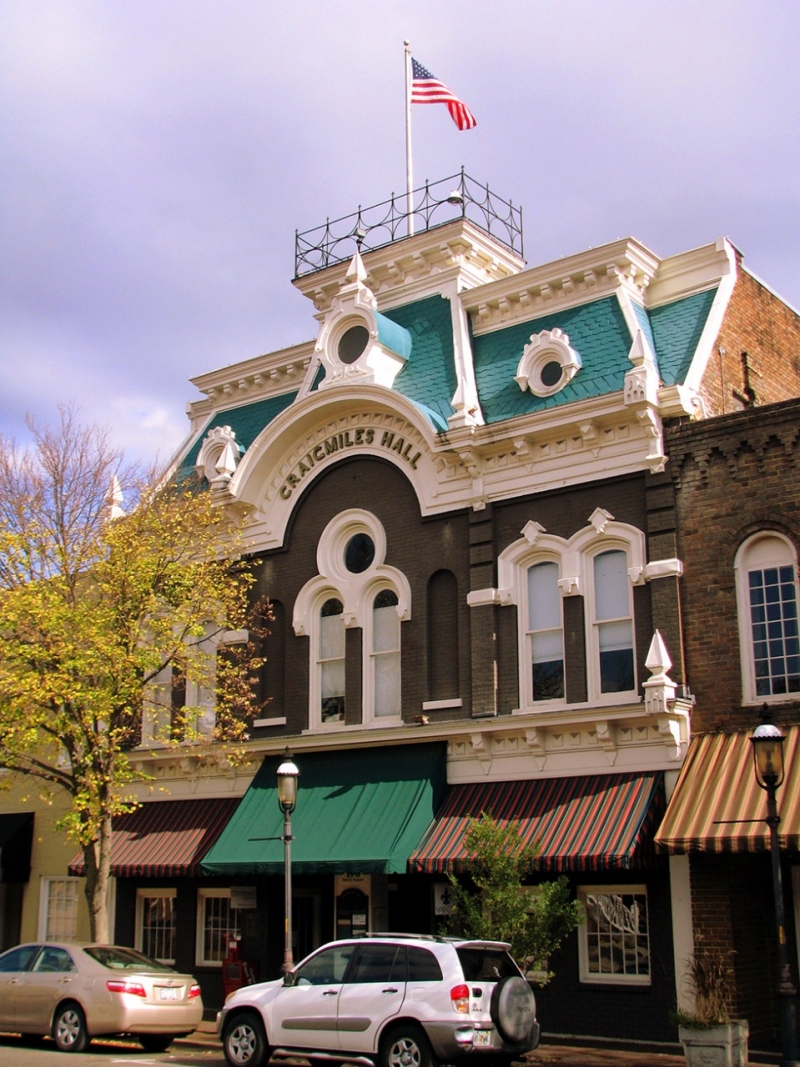
Craigmiles Hall was constructed in Cleveland in 1878 as an opera house and meeting hall during the city’s post-Civil War industrial boom.
Savannah became a CLG on March 2, 2015. The west Tennessee city was incorporated in 1833 as the seat of Hardin County. During the Civil War, the Battle of Shiloh was fought nearby in 1862, and the battlefield is now a National Military Park. Nearby Pickwick Dam was completed in 1983, and Savannah is home to the Tennessee River Museum. The Historic Zoning Commission oversees a historic district that includes the downtown commercial area. THC has funded the preparation of design guidelines in 2015 and a mobile tour of historic sites in 2017.
Paris was certified on October 26, 2015. The west Tennessee town was established in 1823 as the county seat of Henry County. The Battle of Paris was fought in 1862 during the Civil War, and during World War II the U.S. Army built Camp Tyson nearby. In 1944 the Tennessee Valley Authority created Kentucky Lake, the largest man-made lake in the U.S. Paris is home to the “world’s Biggest Fish Fry.” The town’s Historic Zoning Commission oversees the Lee School and North Poplar Street Historic Zoning Overlays. THC funded the restoration of the Paris-Henry County Heritage Center in 2016.
Lynchburg joined the CLG program on January 11, 2017. Lynchburg was established in middle Tennessee in 1841 as the seat of Moore County. The town is the home of Jack Daniel’s Distillery, founded in 1875, and Motlow State Community College, opened in 1969. Lynchburg’s local historic district includes commercial and residential properties in the historic downtown. THC funded a window restoration of the Moore County Courthouse in 2017 and an update of the town’s survey and design guidelines in 2020.
Lawrenceburg was certified on July 10, 2017. The middle Tennessee city is the seat of Lawrence County and was founded in 1819. The town was home to David Crockett, who served as a commissioner and helped choose the town’s location. The Lawrenceburg Historic Zoning Commission oversees a historic zone that includes commercial and residential properties downtown. THC funded restoration of the town’s Crockett Statue in 2018 and ongoing restoration work on the Crockett Theater in 2019 and 2020.
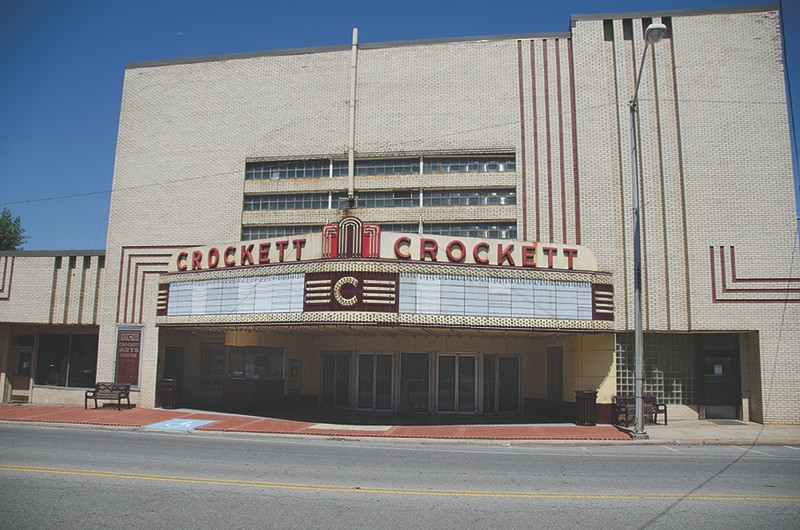
Lawrenceburg’s National Register-listed art deco Crockett Theatre, built-in 1950, is one of the few theaters from this era still operating in the United States.
Lebanon joined the CLG program on July 10, 2017. The seat of Wilson County in middle Tennessee, Lebanon was established in 1802 and is known as the “Cedar City.” The city is home to Cumberland University, founded by the Cumberland Presbyterian Church in 1842. The Castle Heights Military Academy operated in Lebanon from 1902 to 1986, and its National Register-listed campus is now used as the city hall. The Lebanon Historic Preservation Commission was established in 2013 and oversees the Greenlawn, E. Spring Street, Cumberland University, and Square Historic Districts. THC grants in Lebanon include a restoration of Cumberland University’s Memorial Hall in 2017, a ground-penetrating radar survey of Rest Hills and Greenwood Cemeteries in 2021, and updated design guidelines in 2021.
Manchester became a CLG on November 13, 2017. The middle Tennessee city was founded in 1836 as the seat of Coffee County. The city is home to the Old Stone Fort State Archaeological Park, a prehistoric Middle Woodland hilltop enclosure site. Established in 2010, the Manchester Historic Zoning Commission oversees the Downtown Historic District. The town joined the Tennessee Downtowns program and instituted a façade improvement grant program in 2016.
Athens was certified on December 22, 2017. The seat of McMinn County, Athens was established in 1822 in east Tennessee. Tennessee Wesleyan College was established in Athens in 1857. Athens’ local historic district was created in 2010 and includes residences from the late nineteenth and early twentieth centuries. THC projects in Athens include restoration of the First United Presbyterian Church in 2016 and creation of design guidelines in 2018. City Manager C. Seth Sumner was recognized with a THC Certificate of Merit award in 2018 for facilitating the city’s CLG application.
Bell Buckle became a CLG on February 22, 2018. The middle Tennessee town was established in 1856 along the Nashville and Chattanooga Railroad. The Webb School was founded in Culleoka in 1870 and relocated to Bell Buckle in 1886. Bell Buckle hosts the RC Cola and Moon Pie Festival annually. Bell Buckle’s local historic district includes the commercial downtown. THC has funded design guidelines for Bell Buckle in 2018 and an alleyway design plan in 2021, and THC staff recently completed an updated survey of the town.
Elizabethton joined the CLG program on June 5, 2019. The town was founded in 1799 as the seat of Carter County in east Tennessee. The Watauga Association was established nearby in 1772, and the Transylvania Purchase was negotiated with Cherokee leaders in 1775. Nearby Sycamore Shoal State Park includes the Carter Mansion, a reconstruction of Fort Watauga, and the site where the Overmountain Men gathered before fighting at Kings Mountain during the Revolutionary War. Other historic sites include the 1882 Doe River Covered Bridge, Milligan University, established in 1866, and the Renfro-Allen Farm. The Historic Zoning Commission oversees the Downtown Elizabethton Historic District and Blue Grays Field Historic District. THC funded paint analysis at the Carter Mansion in 2017.
Sevierville was certified on June 24, 2020. The city was established as the seat of Sevier County in 1795 in east Tennessee. The McMahan Mound Site is a nearby Mississippian Native American site. Sevierville is the hometown of country music artist Dolly Parton. The city’s Historic Zoning Commission oversees the Downtown Commercial Historic Overlay. In 2021, THC funded interior restoration and fireproofing of the Sevier County Heritage Museum in the National Register-listed Sevierville Post Office.
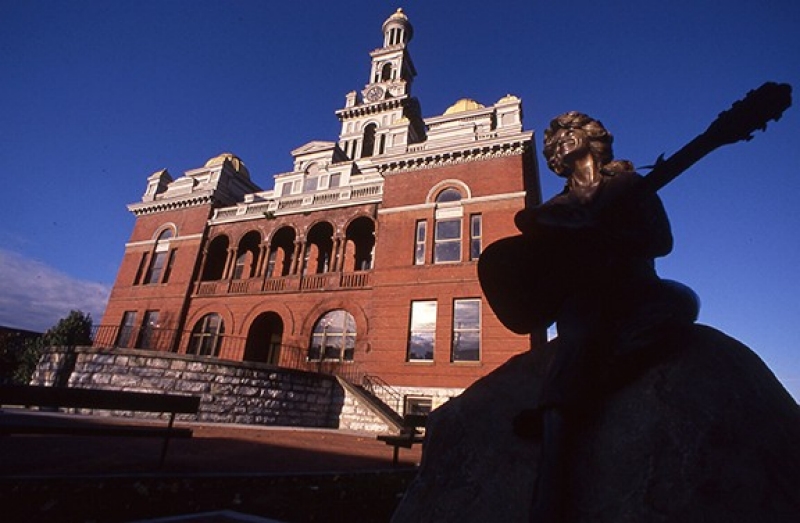
The Sevier County Courthouse has been a landmark in Sevierville since its completion in 1896, the centennial of the State of Tennessee. In 1976, it was the first Tennessee courthouse placed on the National Register of Historic Places. In 1987, Dolly, the statue of Dolly Parton sculpted by Jim Gray was placed on the courthouse lawn—honoring Tennessee’s famed singer/songwriter in the heart of her hometown.
Cumberland Gap became a CLG on March 12, 2021. Located in east Tennessee, the town was established in 1803. It serves as a gateway committee to the Cumberland Gap National Historic Park, which includes the historic mountain pass through the Appalachian Mountains. In 1886, a group of British investors founded the American Association, an investment company that mined for coal and iron and harvested timber. The town’s Historic Zoning District was created in 2007 and includes commercial and residential historic resources which date from the late 1800s and early 1900s.
Jellico joined the CLG program on March 12, 2021. The east Tennessee city was founded in 1878 as a coal mining hub, and it has been the headquarters of the Church of God Mountain Assembly since 1922. The Jellico Historic Zoning Commission was established in 2019 and oversees a historic district that includes the city’s downtown area.
Sweetwater became a CLG on June 8, 2021. The city was established in the 1850s in east Tennessee by Isaac Lenoir and was incorporated in 1875. The former Tennessee Military Institute was established in 1874 in Sweetwater. The city’s Historic Overlay Zone includes the city’s commercial downtown.
Mount Pleasant was certified as Tennessee’s fiftieth Certified Local Government on January 31, 2022. The city was incorporated in 1824. The city is the birthplace of nineteenth-century humorist Samuel R. Watkins. In the 1890s, the city experienced a significant phosphate mining boom, and it is colloquially known as “The Phosphate Capital of the World.” The city established its historic zoning program in 2018, and its overlay protects its historic commercial downtown.
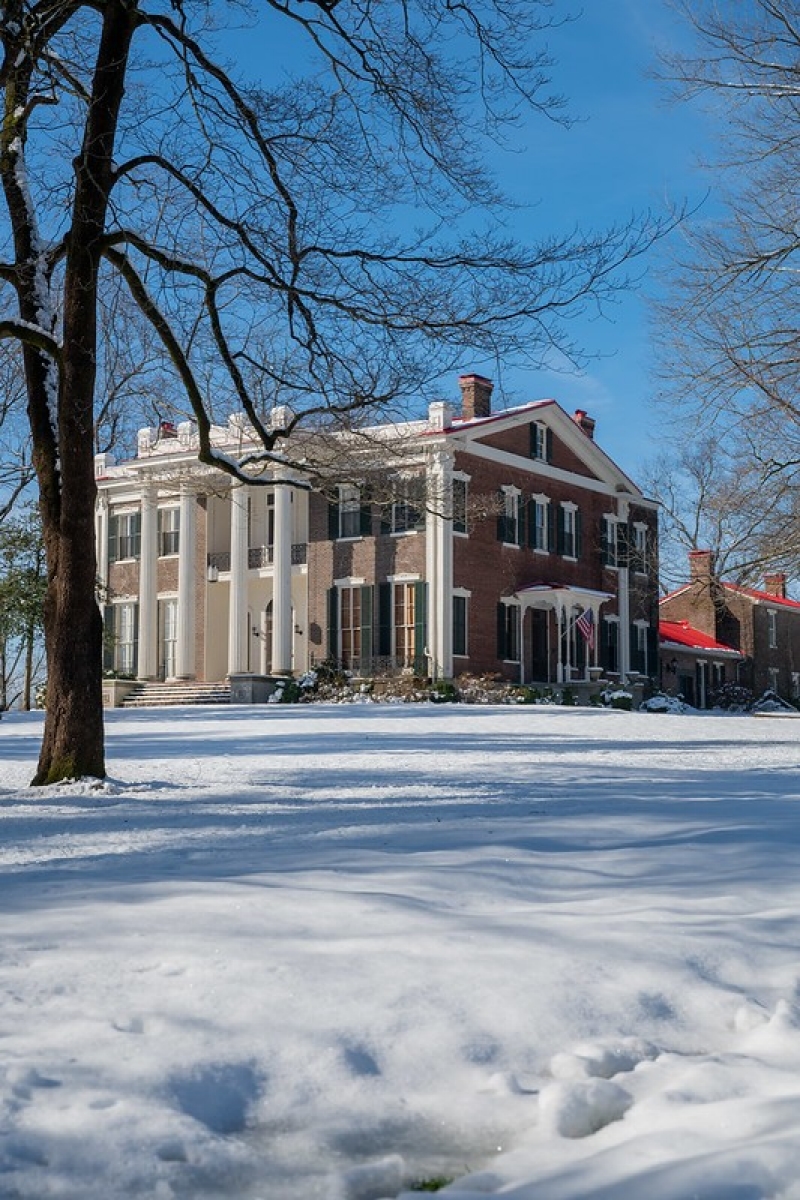
The c. 1859 Greek Revival-style Manor Hall, also known as the Martin Stockard House, is located in the Pleasant Historic District of Mount Pleasant.